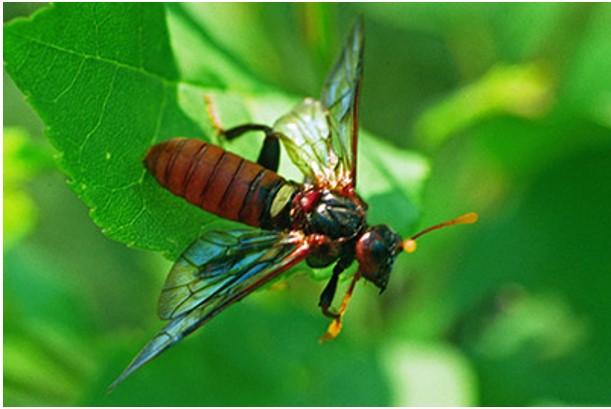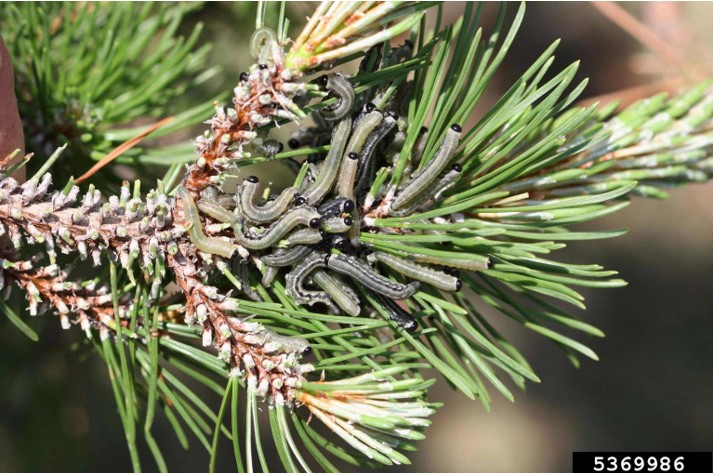Contrary to their name, Sawflies are not flies but a small non-stinging wasp. Their young, Sawfly larvae, are what cause the widespread damage to plants. While they are small and caterpillar like in their appearance, they are not true caterpillars. The University of Minnesota Extension has a lot of information on the large number of sawflies found in the state.

Adult Elm sawfly, photo by Steve Katovich of bugwood.org
Culture:
- There are many kinds of sawflies, which make them able to feed on a wide variety of plants.
- They feed in large groups and damage can be severe and almost overnight.
- Depending on the type, they feed from May to September for 2-3 weeks while in their larval stage
- As they become adult flies, the feeding stops.

European pine sawfly larvae on mugo pine. Photo by invasive.org
Plants they feed on:
-
Spruces and Pines
This fly attacks the new and old needles and will defoliate an entire section of a branch before moving on. Feeding is from June to August can severely damage the tree and may even cause death.
-
Roses
This fly will skeletonize the leaves of roses, which is very easy to spot. They will feed from May to June. Stresses from feeding will usually only effect younger roses.

Rose sawfly (slug) with damage on leaf. Photo by UofMN Ext.
-
Ash
This fly will eat the entire leaf except for the veins but will usually not kill a mature tree. Feeding is from June-September.
Control:
- The only time that sawflies can be controlled is during their larval stage while they are feeding.
- Once the larvae turn into adult sawflies, no insecticide can affect them.
- It is important to scout out your plant during the spring when the larvae are young and beginning to feed.
- Check plants that are most susceptible to sawfly larvae attacks.
- Control with insecticides such as Eight. Spray only the plants that are infested with the larvae at the time. The flies and larvae tend to stay on one plant for their entire feeding time. Check surrounding plants regularly just in case.

Image by Егор Камелев from Pixabay
The experts at Gertens are always available to answer your questions!
